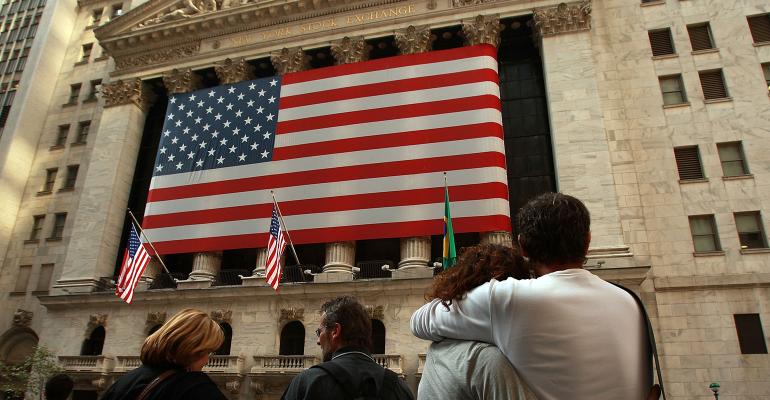(Bloomberg) -- Investors awash in optimism have bid up equities to their best start of the year relative to bonds in almost a decade.
The S&P 500 climbed more than 4% in the first 28 trading days of 2021, while long-dated Treasuries lost more than 5%, according to data compiled by Bespoke Investment Group. The 9.3 percentage point gap in performance is the biggest to start a year since 2013.
The reason for the divergence is simple, according to Bespoke’s George Pearkes: The economic outlook is brightening. Reflation bets are building across asset classes as the Covid-19 vaccine rollout accelerates and investors anticipate further fiscal aid. Meanwhile, analysts upgraded their 2021 earnings forecasts in January at the second-fastest rate to start a year since 2013, data compiled by Bloomberg show.
“Yields are up because the outlook has improved,” said Pearkes, a global macro strategist at the firm. “It’s pretty much that simple. Higher expected earnings, higher stock prices.”
Five-year breakeven rates -- a proxy for investors’ estimates of inflation -- rose to the highest level since 2013 this week, briefly lifting yields on 30-year Treasuries above 2% for the first time in a year. That’s helped push cyclical stocks higher, with energy and financial shares among the best performers in 2020.
That momentum wobbled on Wednesday after a cooler-than-anticipated inflation report, pushing Treasury yields lower while the S&P 500 ended flat. However, equity futures climbed Thursday in early trading while rates drifted higher.
Earnings Optimism
Corporate America is also upbeat. So far this earnings season through yesterday, 81% of S&P 500 companies that reported have beat analyst estimates -- a near-record pace, according to data compiled by Bloomberg Intelligence. That points to companies returning to earnings growth earlier than anticipated post-pandemic. Based on actual results and estimates for those that have yet to report, fourth-quarter profits likely increased 3.6%, compared with a decline of 9% forecast a month ago.
The reflation trade could eventually bite equities should stronger economic growth and a rebound in price pressures translate into meaningfully higher yields, according to BNY Mellon’s Lockwood Advisors. Rock-bottom rates have helped justify high equity valuations, with even Federal Reserve Chairman Jerome Powell acknowledging the dynamic.
“That’s probably the biggest risk to equities over time,” said Matt Forester, chief investment officer of BNY Mellon’s Lockwood Advisors. “If markets were reacting to a reflation surge and we were to see much higher interest rates, I think that is a risk for equity markets.”
--With assistance from Claire Ballentine.





